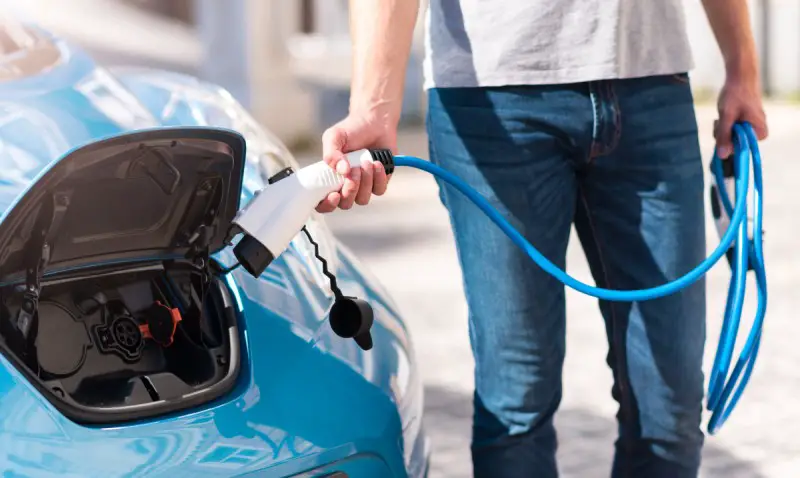Can Lithium Ion Car Batteries Be Recycled?
As companies such as Tesla continue to roll out some of the most innovative electric vehicle designs the automobile industry has ever seen (check out the Tesla Cybertruck), some people are concerned a increase in electric car sales will result in a new environmental issue. This issue involves the lithium-ion batteries that power electric cars and trucks, and how people can recycle batteries from their electric vehicles when the time comes? This article is here to address some of the common questions people have about recycling lithium-ion batteries from electric vehicles, and some general facts about the batteries powering electric cars and trucks!
How Many Lithium Ion Batteries Are Recycled?
According to conservative estimates, roughly 1/4th of all materials in a lithium-ion battery cell can be recovered through recycling. Others have the number as high as 96%, which shows that more research is definitely needed on how many lithium ion batteries are recycled and the percentages of each battery cell that are reused. However, one of the most significant concerns is that many industry experts believe that by 2030 approximately 12 million tons of lit-ion batteries will need to be disposed of. This can could create a significant issue as it pertains to toxic waste.
Without proper battery recycling programs in place the vast amount of old lit-ion batteries from electric vehicles would most likely end up in landfills. This is not only a problem because leaky batteries can pollute groundwater and the land, but many of the materials that make up lit-ion batteries have the ability to be be recovered and rested when recycled properly. The problem is that very little recycling is done with e-waste and lit-ion batteries from electric vehicles.
Are Lithium Batteries Environmentally Friendly?
One of the most comprehensive articles detailing the environmental impact of lit-ion batteries is from a Wired article that open up with the following statement:
“What links the battery in your smartphone with a dead yak floating down a Tibetan river? The answer is lithium.”
One story that really describes the impact of lithium ion batteries occurred in May 2016 when protestors in Tagong threw dead fish onto the streets that they had gathered the Liqi river. What killed all the fish was a toxic chemical leak from a nearby lithium mine, devastating the local eco-system. The water was contaminated which resulted in the death of thousands of fish and other animal life. Not to mention, drinking water from the now toxic river was undrinkable.
The reality is electric vehicles require lit-ion batteries, and with the increase in demand for emission-less automobiles there will also be an increase in the production of lithium-ion batteries. In fact, Cairn Energy Research Advisors believe that the lit-ion battery industry is expected to grow to almost 800 GWhs in 2027, which is nearly 8x more than where it is today. However, this increase in demand also presents a problem. Although replacing fossil fuels is certainly a very good thing, the environmental impact of lithium has the potential to become a serious issue in its own.
With mining the components that make up an electric vehicle’s battery there is always a significant chance highly toxic chemicals can leak into the water supply. Some of these highly toxic chemicals include hydrochloric acid. The environmental impact is so strong that impacts on fish as far as 150 miles downstream from a lithium processing operation were found dead. The reason is because lithium extraction 100% harms soil, groundwater, and causes air contamination. Lithium is very problematic ingredient used in the rechargeable batteries that power electric vehicles, but cobalt and nickel are other ingredients that are very negative for the environment.
Top 7 Electric Car Facts
- The electric vehicle market is growing faster than ever before with companies such as Tesla leading the charge.
- Electric vehicles are highly efficient because nearly 80% of energy in lit-ion batteries goes directly into powering an electric vehicle whereas gas-powered automobiles that number is around 25% on the high end.
- Norwegians own more electric vehicles per capita than any other nation
- The 2019 Tesla Model S and 2019 Tesla Model X are two of the most popular electric cars on the market today, but the Tesla Cybertruck might eclipse all electric vehicle based on the hype.
- Electric vehicles that are set up with fast-charging batteries can receive upwards of an 80% charge in approximately 20 minutes.
- Electric vehicles emit zero tailpipe pollutants while they are running on electric power!
- The lithium-ion batteries the power electric vehicles are one of the most expensive parts of the automobile, but the cost is getting cheaper every year.
The Overall Environmental Impact of Electric Vehicle Batteries
The general consensus is that the lithium-ion batteries that power electric vehicles are certainly not the perfect green technology. Yes, electric vehicles reduce our carbon footprint and substantially lower fossil fuel consumption, but much progress needs to be made when it comes to mining lithium and the processes used to recycle electric car batteries. However, the benefits of motorists adopting electric vehicles over gas-power vehicles can dramatically reduce dependency on gasoline, which has a far more negative impact on the environment than lithium battery components.

